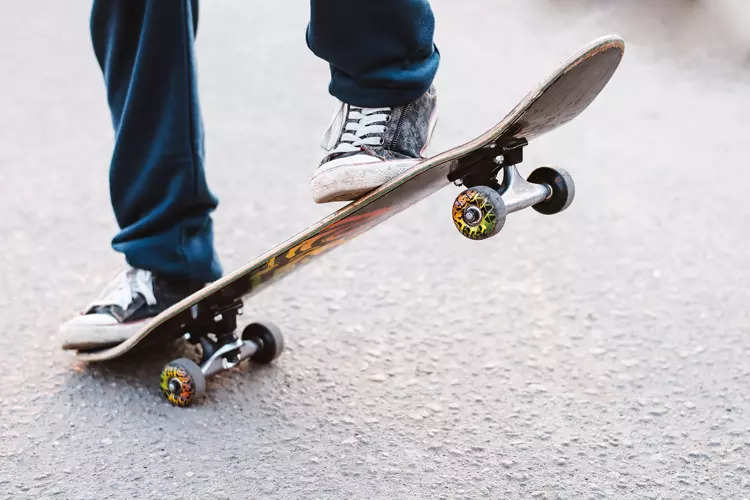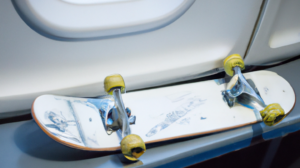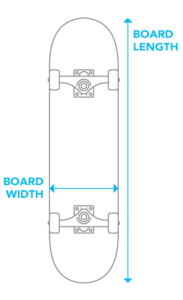The best skateboards for street skating are standard skateboards with an almost symmetrical popsicle stick-like deck. Street skaters also typically prefer smaller wheels (50-54 mm) and narrower skateboards (8.0″ – 8.5″) because they are more accessible to ollie, flip tricks, and land changes.
How to set up your best skateboard correctly.
You must set it up correctly to make the most of your street skateboard. Below, skateboard manufacturer Jiesen shares a write-up on setting up your skateboard correctly, which will hopefully help you tweak the best skateboard for you.
The best street skateboard setups need to have the following specifications.
• Deck widths between 8.0 and 8.25 inches with a medium or high concave.
• Small stiff wheels between 50 mm and 53 mm. The stiffness gauge should be between 99A and 100A.
• A low truck that matches the width of your deck.
Of course, the in-your-face specification is not absolute, and it may vary considerably depending on your preferences. In this article, we won’t mention specific skis but will steer you in the right direction so you can assemble your own.

Deck widths between 8.0″ and 8.25″
When you are primarily skating on the street, you will probably be focusing on technical skating, and for that, you will need a narrow deck. In general, a deck between 8.0″ and 8.25″ is recommended. This is because a more expansive deck is less responsive than a narrower one.
While there are exceptions, you need a snappy and responsive deck. It also depends on what you are used to. Many skaters do technical tricks on more expansive decks. Still, choosing 8.0 inches or 8.25 inches is a safe choice. The 8.0-inch is more responsive and helps flip your board faster, while the 8.25 is still responsive but offers more stability.
If you’re tall or somewhat heavy, sometimes it’s best to get a more expansive deck. You will have to find out this for yourself, as it is not an exact science. Some tall people skate small decks, and some short people skate expansive decks.
You may also want to consider the shape or concave of the deck. A high concave means your board is more curved, which makes technical tricks “easier.” Steep concaves make it harder to balance the board, and beginners should consider a rounded concave.
Small, stiff wheels
Use wheels between 50 mm and 53 mm. Anything smaller will be difficult to skate, and anything more significant will make your setup less responsive. Larger wheels are usually better when skating transitions, mini ramps, or parks.
As for stiffness, it depends somewhat on the surface you are skating on. You don’t want soft wheels because you’ll bounce everywhere. Softer (below 87A) wheels are better for cruising.
If you ride on rough surfaces, the 99A may be too hard, and if it’s terrible, consider the 97A or even the 92A. It would help if you found the right balance between performance and comfort.
Riding 100A wheels on rough roads can be very frustrating. A lot of vibration can throw you off balance, and your feet will start to sting after a while.
Truck setup
Even though I know, skateboarders (like Independent) ride high trucks. It’s best to get a set of low trucks or medium-high trucks. You want to be close to the ground to optimize your center of gravity.
Another benefit is that lower trucks are more responsive than higher trucks. For example, at least in theory, flipping tricks will be more straightforward on a lower truck.
Lower trucks provide more stability when grinding on circular/tube tracks. The shorter pivot point between your feet and the track means more stability, and you are less likely to slip than on a higher truck. The more excellent resistance makes it more likely to land, and you stay on your board.
If you always slide the truck low and switch to high, you’re more likely to notice a difference. Other factors include the stiffness of the bushings, the tightness of the truck, and the pressure applied.
Finally, your central pin authority. You don’t want it to stick out and come in contact with the rails. You might consider shaving it off a bit if this is an issue.
The hard part is that different brands use different metrics, and there is no absolute industry standard. Some brands offer low trucks, while others consider them medium to high trucks. Not all brands list height specs, and you must choose based on the situation.
If you are a beginner skateboarder, don’t be in a hurry to adjust the best joint skateboard that needs to be adjusted repeatedly after using the feeling to test the best configuration. If you want to know more about skateboarding, welcome to our website. You are welcome to contact us if you need to customize or purchase skateboards and related accessories.







